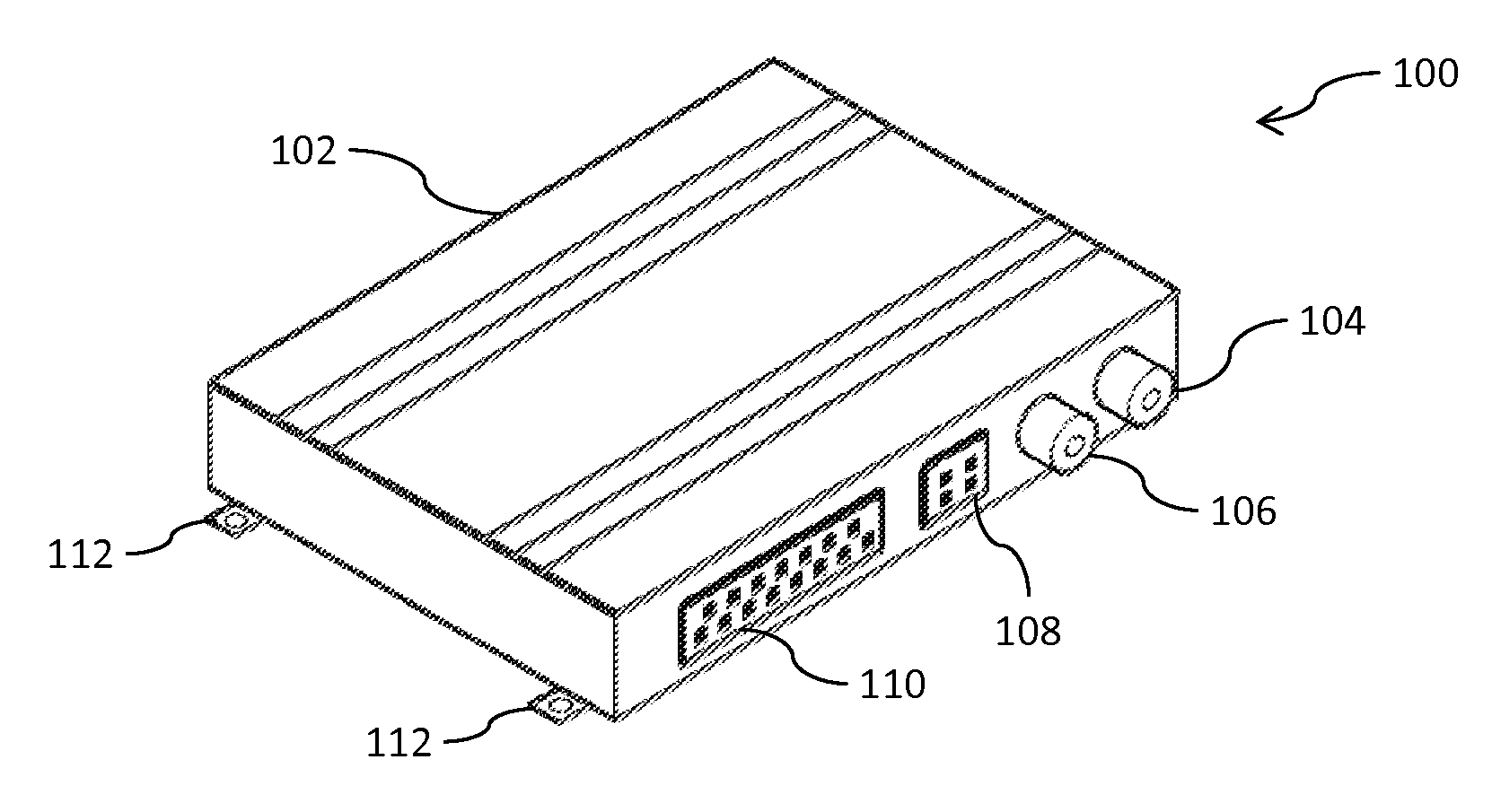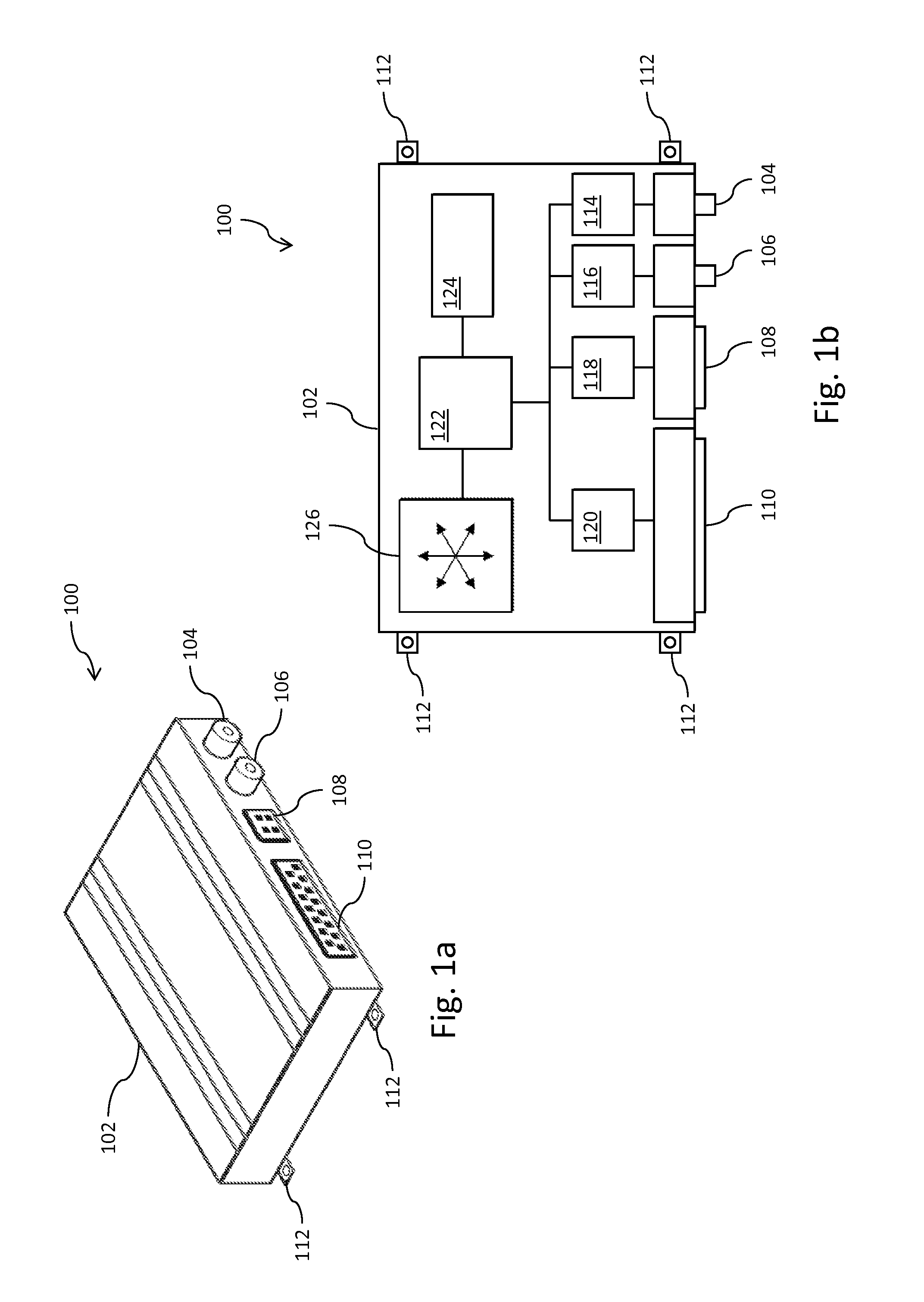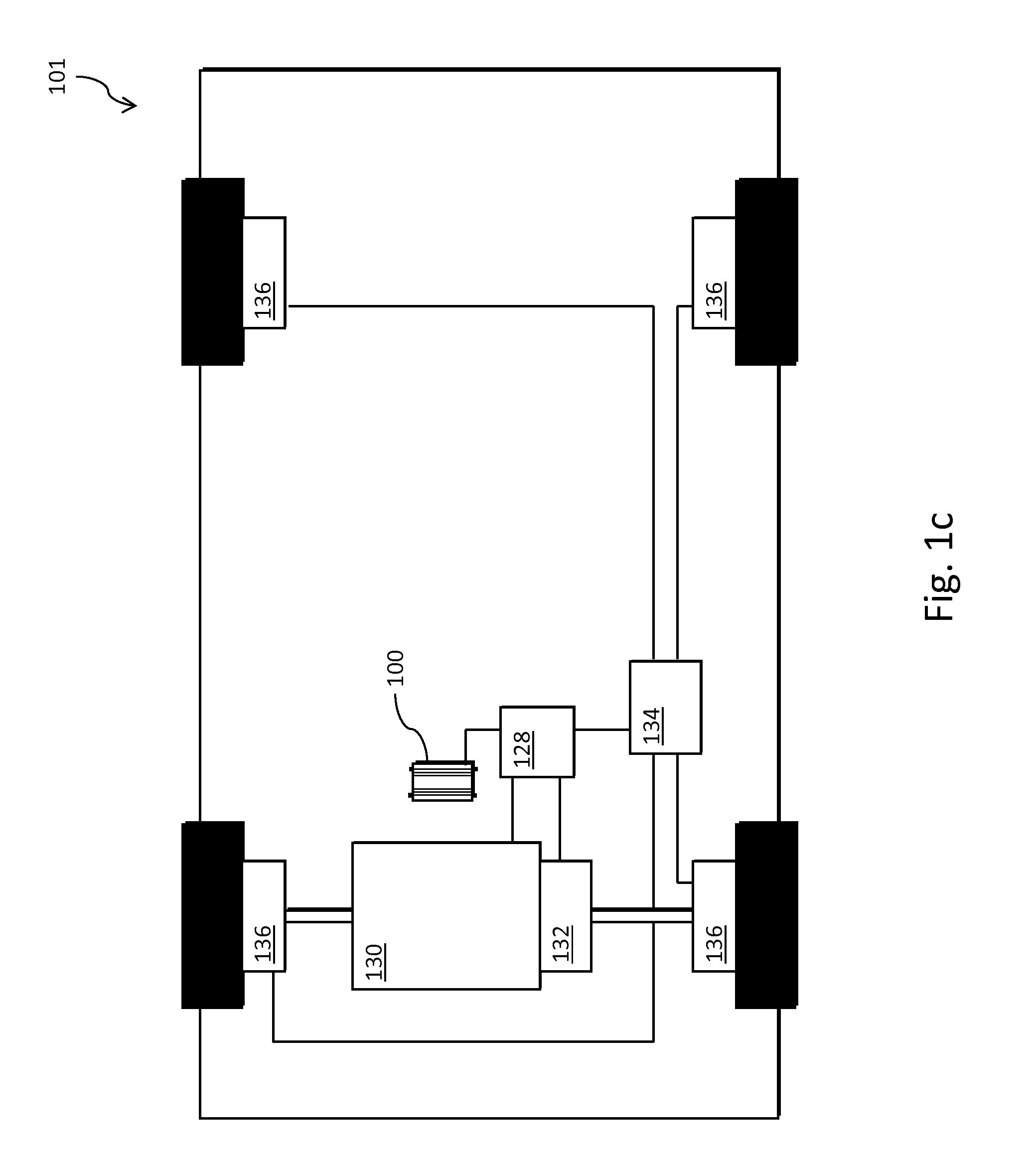System and method for identifying a spatial relationship for use in calibrating accelerometer data
a technology of spatial relationship and accelerometer, which is applied in the field of system and method for identifying spatial relationship for use in calibrating accelerometer data, can solve the problems of inaccurate mounting of accelerometer, potential meaninglessness of accelerometer data output, and difficulty in accurately mounting the accelerometer. to achieve the effect of improving accuracy
- Summary
- Abstract
- Description
- Claims
- Application Information
AI Technical Summary
Benefits of technology
Problems solved by technology
Method used
Image
Examples
Embodiment Construction
[0046]FIG. 1 shows a perspective view of a telematics unit 100 according to an embodiment of the invention. The telematics unit 100 has a case 102, on the side of which are a number of connectors 104, 106, 108 and 110.
[0047]Of these connectors, a GPS antenna connector 104 and a mobile communications antenna connector 106 enable the telematics unit 100 to be connected to external antennae. Consequently the telematics unit 100 can be mounted in a position in the vehicle, for example in the engine bay, where normally such antenna would be ineffective due to the quantity of metal blocking the signal. The connected antennae may then be mounted in the vehicle in a position where the signal strength is sufficient for effective operation.
[0048]User interface connector 108 is provided to connect the telematics unit 100 to a user interface unit (not shown). The user interface unit can be mounted in the cab of the vehicle, and be used, for example, to allow a driver of vehicle login or to prov...
PUM
 Login to View More
Login to View More Abstract
Description
Claims
Application Information
 Login to View More
Login to View More - R&D
- Intellectual Property
- Life Sciences
- Materials
- Tech Scout
- Unparalleled Data Quality
- Higher Quality Content
- 60% Fewer Hallucinations
Browse by: Latest US Patents, China's latest patents, Technical Efficacy Thesaurus, Application Domain, Technology Topic, Popular Technical Reports.
© 2025 PatSnap. All rights reserved.Legal|Privacy policy|Modern Slavery Act Transparency Statement|Sitemap|About US| Contact US: help@patsnap.com



